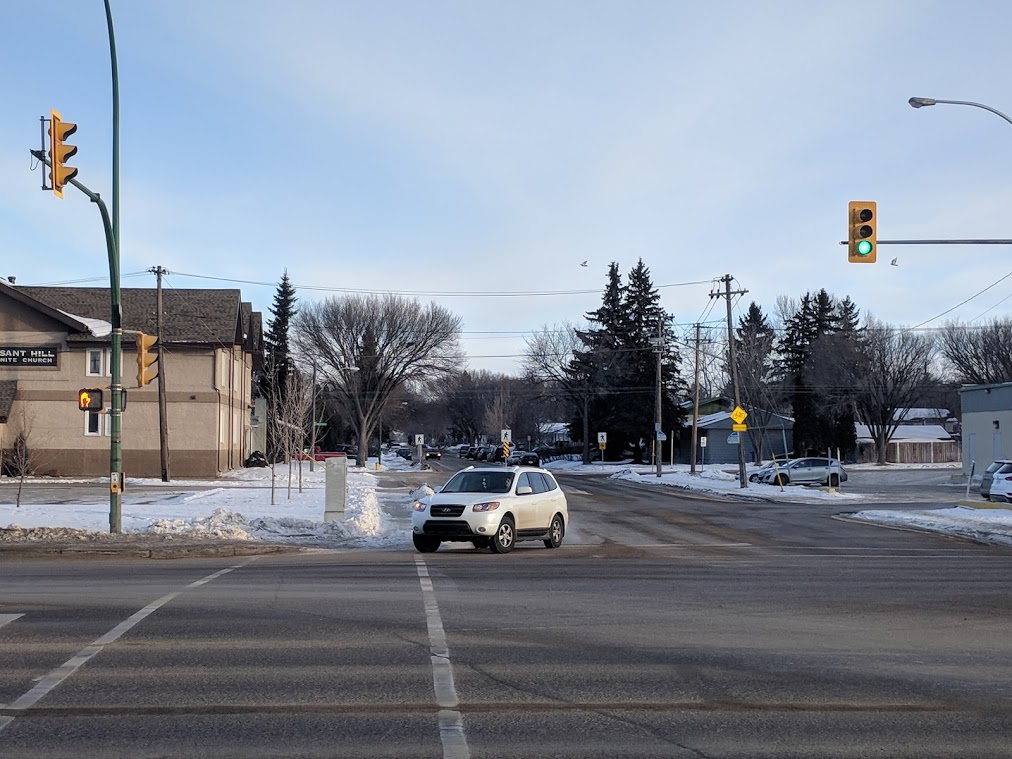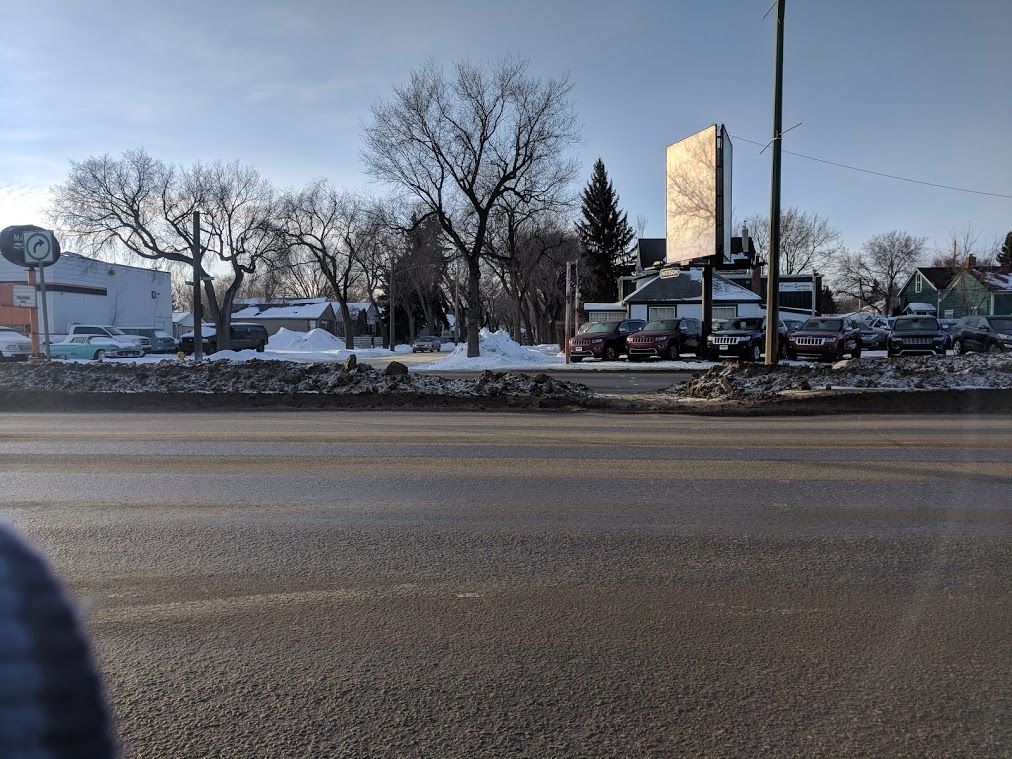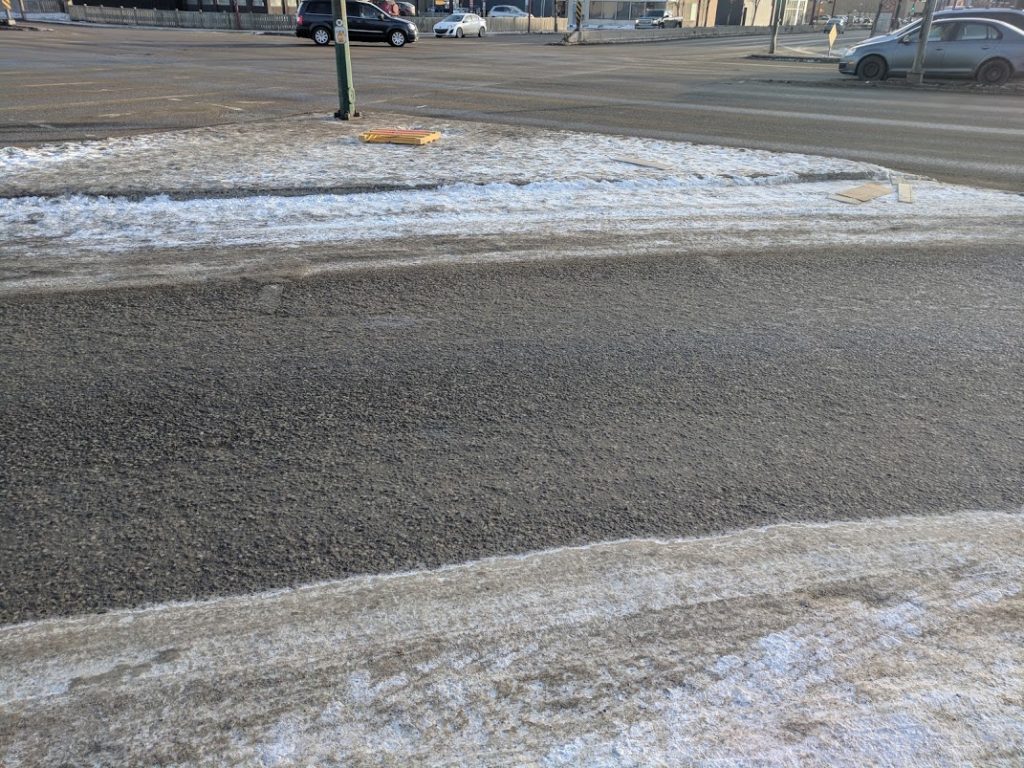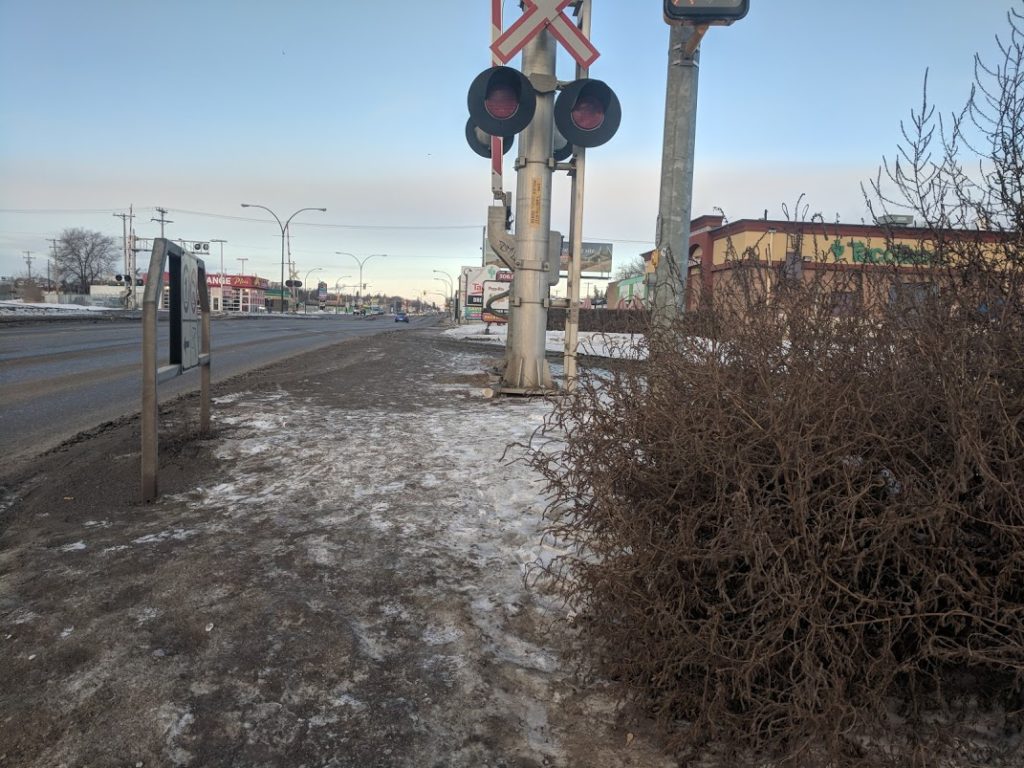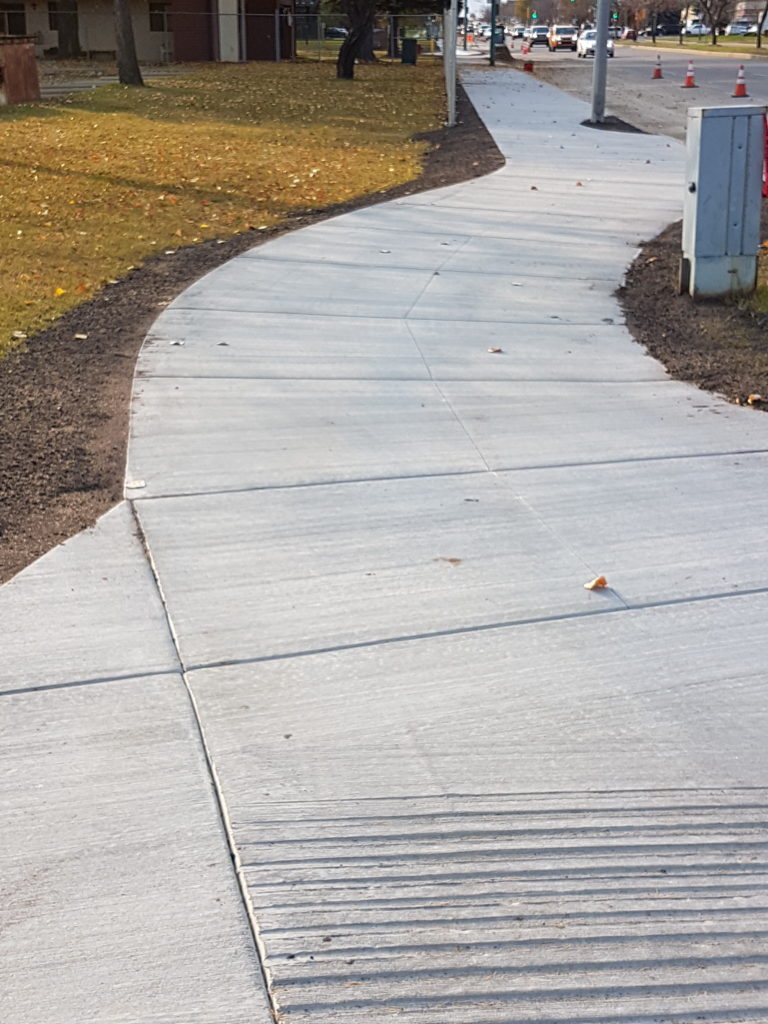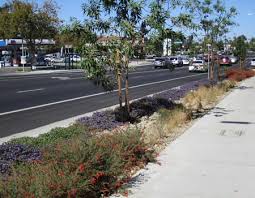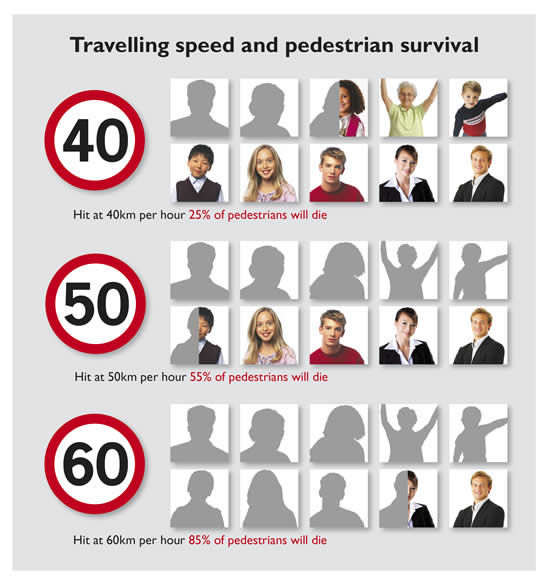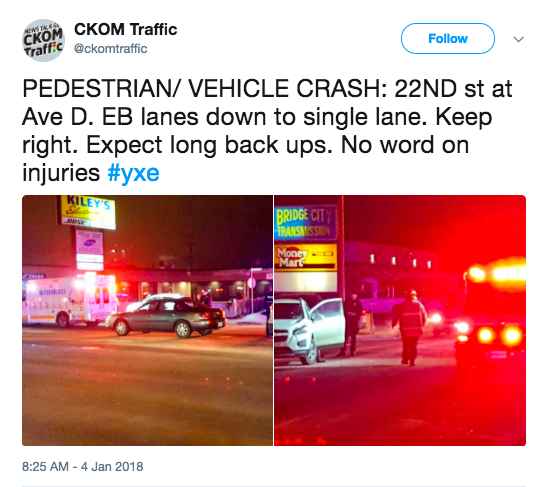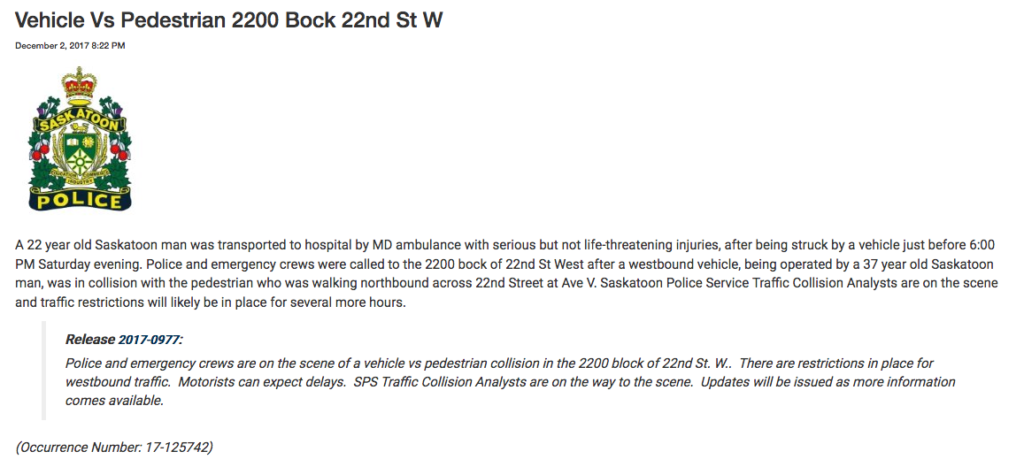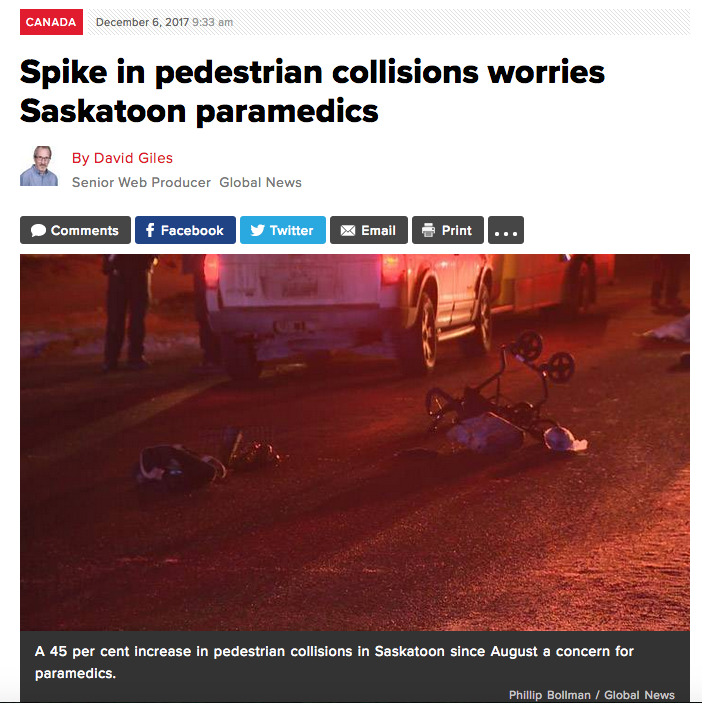22nd Street in Saskatoon bisects some of the poorest neighbouroods in the city, those that are the least likely to own cars and the most likely to walk or use transit. As discussed in Part 1 of our series 22nd is also among the most dangerous streets in the province, with double-digit pedestrian-car collisions resulting in injury or death in 2017 alone.
Knowing the vulnerable population that relies on this street for access to education, services, groceries, jobs and health care, what care does the city take to ensure safe and accessible conditions along this corridor? Let’s take a look.
The only grocery store in the area is on 22nd and Avenue W. To get there involves traversing streets that look like this:
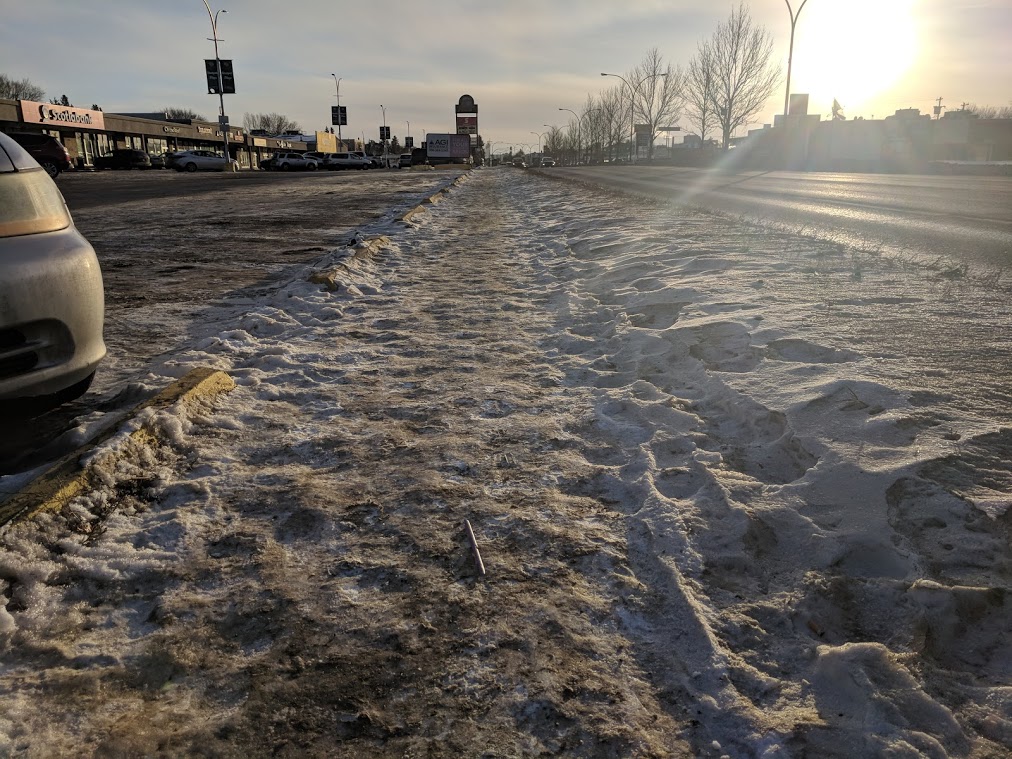
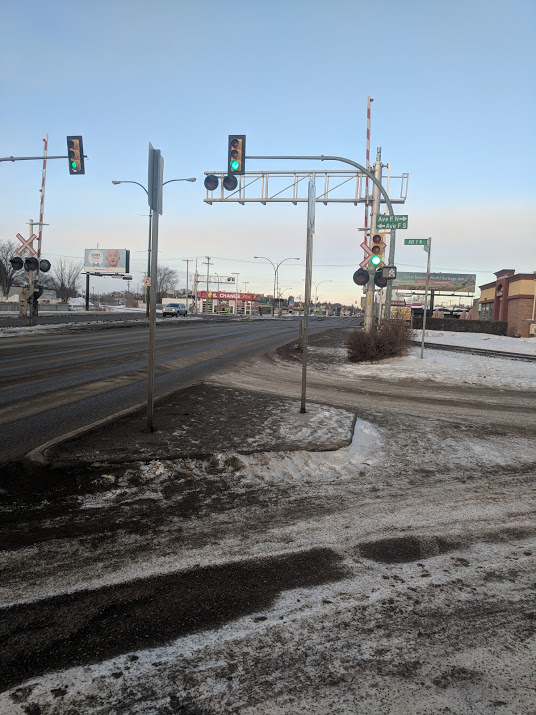
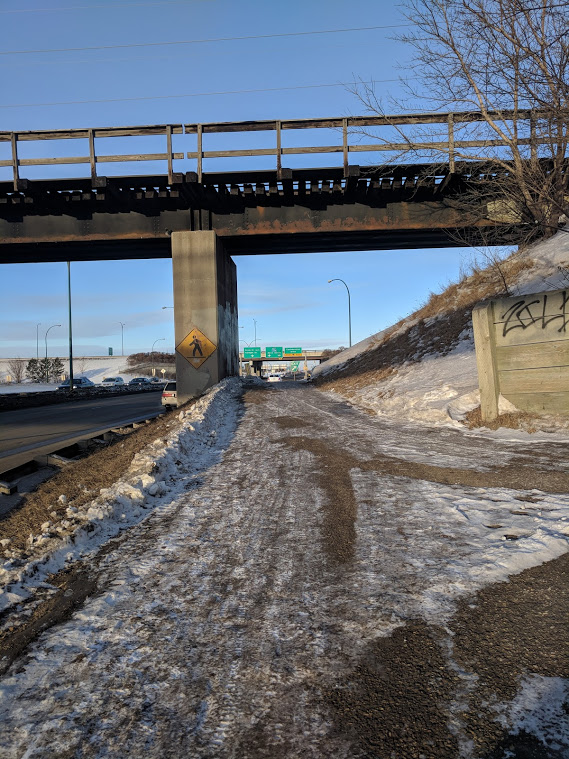
It’s probably best to think of it like a video game when you are pushing a shopping cart full of groceries or a stroller down these streets. Make it fun for youself while you try to avoid slipping on the ice and snow into the street.
The city and media don’t like to acknowledge dangerous conditions for walkers on 22nd, perferring to repeatedly blame pedestrians for jaywalking even though the large majority of pedestrian-involved crashes on 22nd are the fault of the car driver.
However, even when a pedestrian crosses against the right of way can they really be blamed? Not only are the streets on 22nd by and large inaccessible due to snow, ice, dirt, dust, narrowness and lack of curb cuts but even an alternative route through parallel streets is full of dangers:
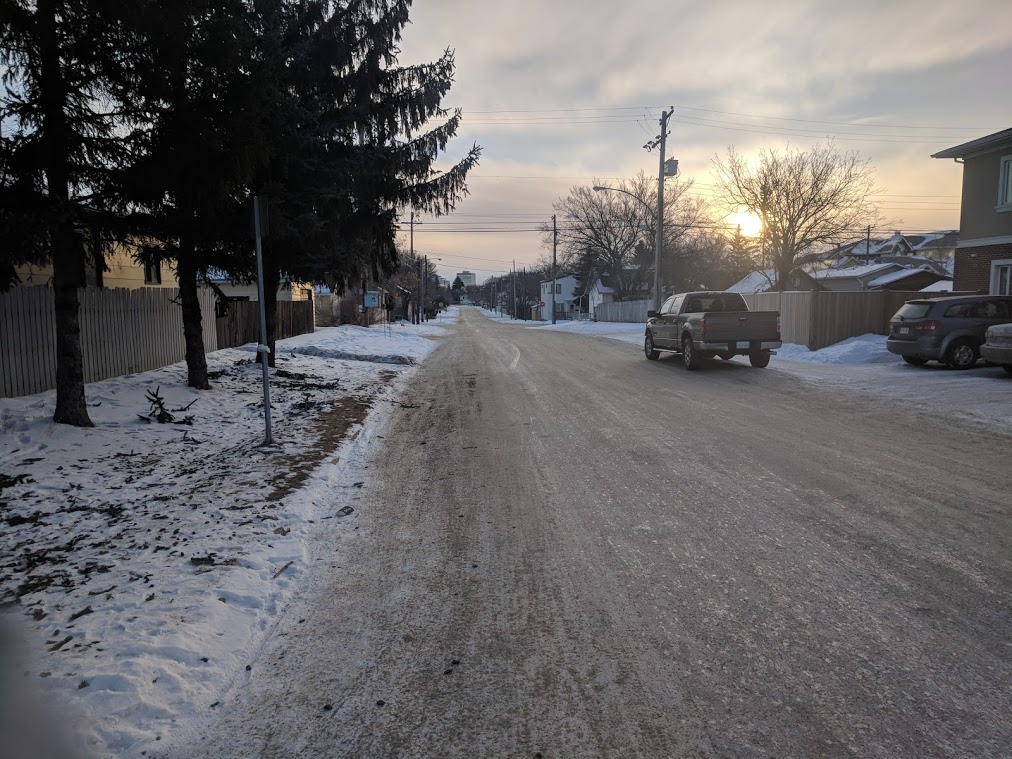
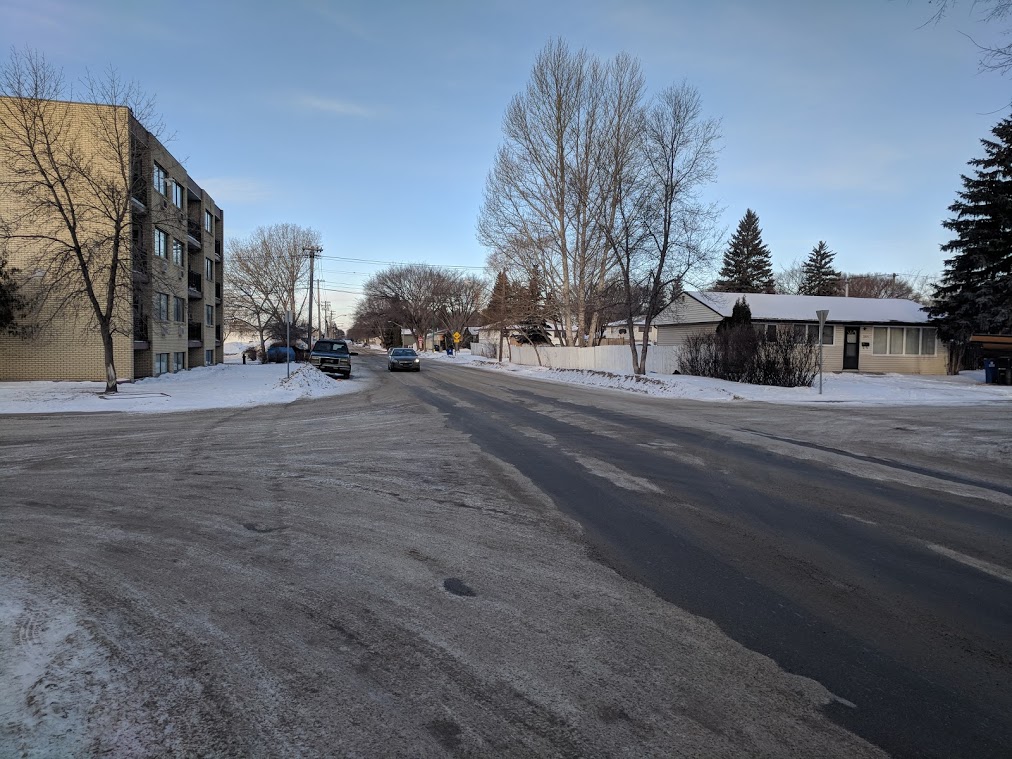
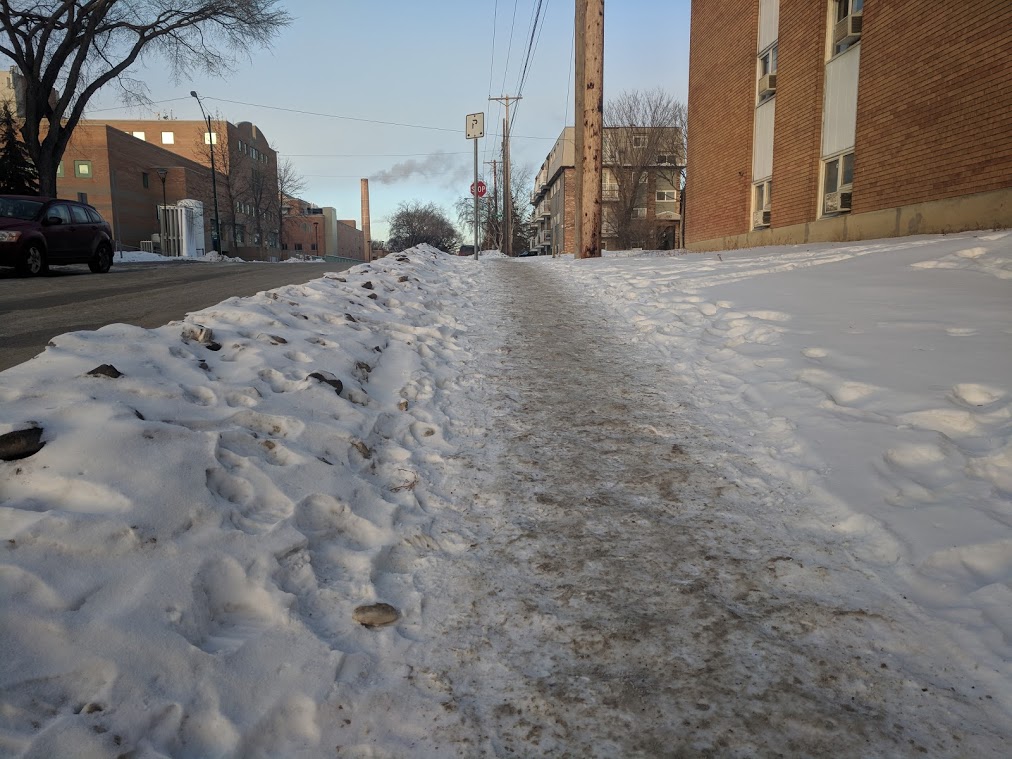
Saskatoon owes a basic right to its citizens of safe and accessible transportation. This is not happening right now where its needed most, and it’s a shameful and continuing failure of the whole city. 22nd street is dangerous by design and needs to be made safer immediately.
Continue on to our next post where we present immediate and desperately needed fixes to make 22nd Street safer for walkers.
